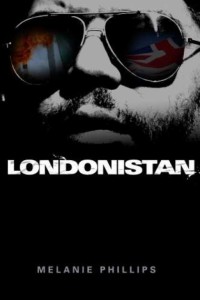|
Reviewed by Joseph Morrison Skelly, Ph.D., Associate Professor of History, College of Mount Saint Vincent On January 6, 2008 Dr. Michael Nazir-Ali, Anglican bishop of Rochester, England, published a New Year’s warning to his countrymen in the Sunday Telegraph, lamenting how Islamic extremists have established “no-go” areas in cities across Britain, places where Christians and other non-Muslims do not feel safe walking the streets. Needless to say, his admonition sparked off widespread indignation. Mohammed Shafiq of the Ramadhan Foundation in London asserted that “Mr. Nazir-Ali is promoting hatred towards Muslims and should resign.” Even some establishment figures distanced themselves from the bishop, with the Prime Minister, Gordon Brown, refusing to accept that there are “no-go areas in any part of the country.” This rhetorical firestorm was preceded by a real inferno in July, 2005, when British suicide bombers massacred more than fifty innocent people on the transit system in central London. Since then the embers have continued to burn: in the summer of 2007 two car-bombs packed with gasoline canisters and nails were defused outside a London nightclub at closing time, barely adverting another conflagration; several days later two Islamic terrorists, one a doctor, drove a flaming car into the main terminal at Glasgow airport; dozens of Muslim radicals have been arrested across the United Kingdom for planning and inciting terrorist acts; and, the security forces estimate that the total of British extremists trained for jihad may number in the thousands. What has happened to free speech, religious freedom and personal safety in the land of the Magna Carta? This slow burn of individual liberty is explained in Melanie Phillips’ groundbreaking book, Londonistan. This tour de force documents, often in chilling detail, how London, one of the great cities of the Western world, has become “home to the largest collection of Islamist activists since the terrorist production line was established in Afghanistan.” This, alas, is not a new phenomenon. Over the past decade, and “under the noses of successive British governments, Britain’s capital has been turned into ‘Londonistan,’” and is now “the major European center for the promotion, recruitment and financing of Islamic terror and extremism.” This transformation has not been confined to the banks of the Thames River, but has rippled out across the country, a process detailed in the book. While it may be a stretch for Phillips to suggest “that it was in Britain that al-Qaeda was actually formed as a movement,” she is right to stress how the tentacles of Islamism have reached into every region of the nation—from Hampshire to Yorkshire to Ayrshire. The United Kingdom, with London at its core, is both an incubator and a magnet of jihad. The attacks of July 2005, after all, “had been carried out by home-grown Muslim terrorists, suburban boys who had been educated at British schools and had degrees, jobs and comfortable families. Yet these British boys, who loved cricket and helped disabled children, had somehow been so radicalized within the British society that had nurtured them that they were prepared to murder their fellow citizens in huge numbers and turn themselves into human bombs to do so.” At the same time, jihadists from around the world now flock to England, motivated by the opportunity to link up with local terrorist cells. How did all of this happen? Phillips identifies several interrelated reasons. First, “among Britain’s governing class – its intelligentsia, its media, its politicians, its judiciary, its church and even its police – a broader and deeper cultural pathology has allowed and even encouraged Londonistan to develop, one that persists to this day.” This malaise is, in essence, a form of national self-loathing. It has been accelerated by a second cause: the cult of multiculturalism. The author dedicates an entire chapter to this insidious theory, which is “the orthodoxy throughout all the institutions of British public life. Put at its simplest, it holds that Britain is now made up of many cultures that are equal and therefore have to be treated in an identical fashion, and that any attempt to impose the majority culture over those of minorities is by definition racist.” Thus hundreds of thousands of recent immigrants – a third factor – have not been required to assimilate into British life, nor have their children, creating a pool of young men and women ripe for radicalization by imams operating out of mosques in London, Liverpool and Leicester. The result, according to Bishop Nazir-Ali of Rochester, who is quoted frequently in the book, is that a generation of Muslim children has been “indoctrinated with a set of inflammatory ideas about the need for Islam to achieve primacy over the non-Islamic world.” This volume is highly recommended. It is a fire bell in the night. Despite a growing awareness on the part of many English citizens that London is a ticking time bomb, which Melanie Phillips recounts in an afterword to the paperback edition, the jury is still out as to whether they will save themselves. She warns that this has important implications for America. “What if, instead of holding the line for Western culture against the Islamic jihad, Britain is sleepwalking into the arms of the enemy?” If so, new flames may flare up, and the United States may one day be called upon to help extinguish what future historians might describe as the Second Great Fire of London. |


 Londonistan
Londonistan